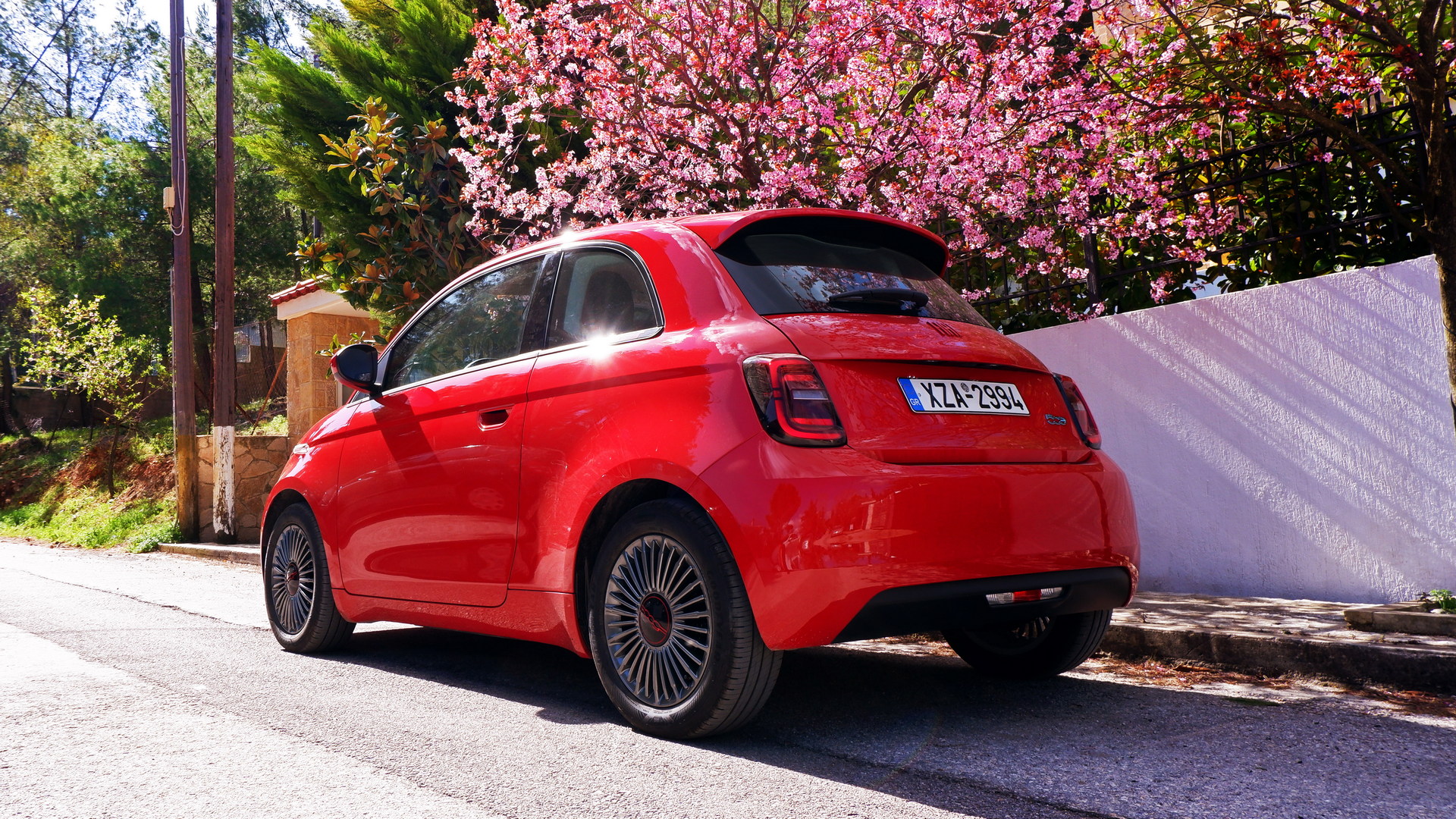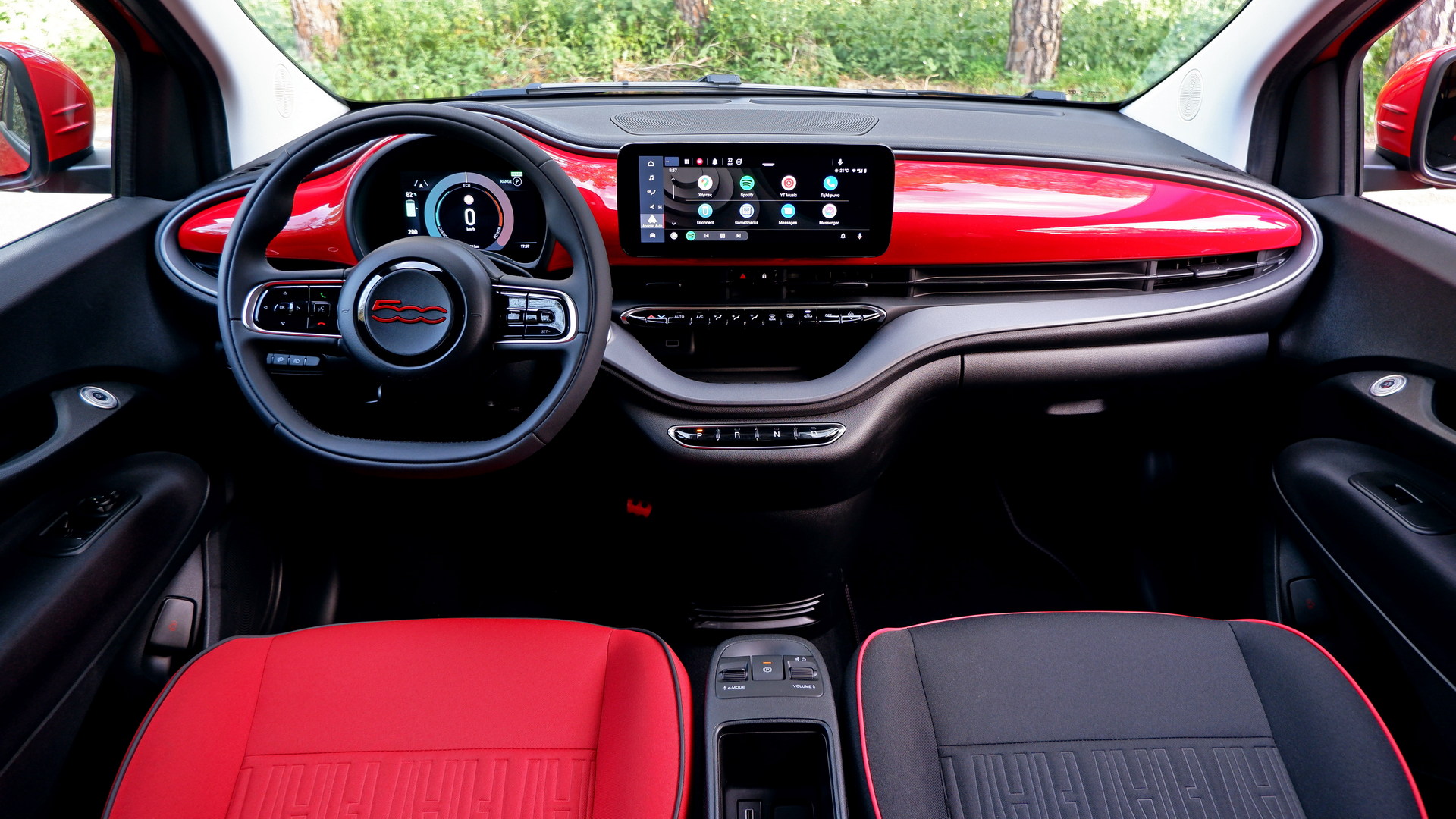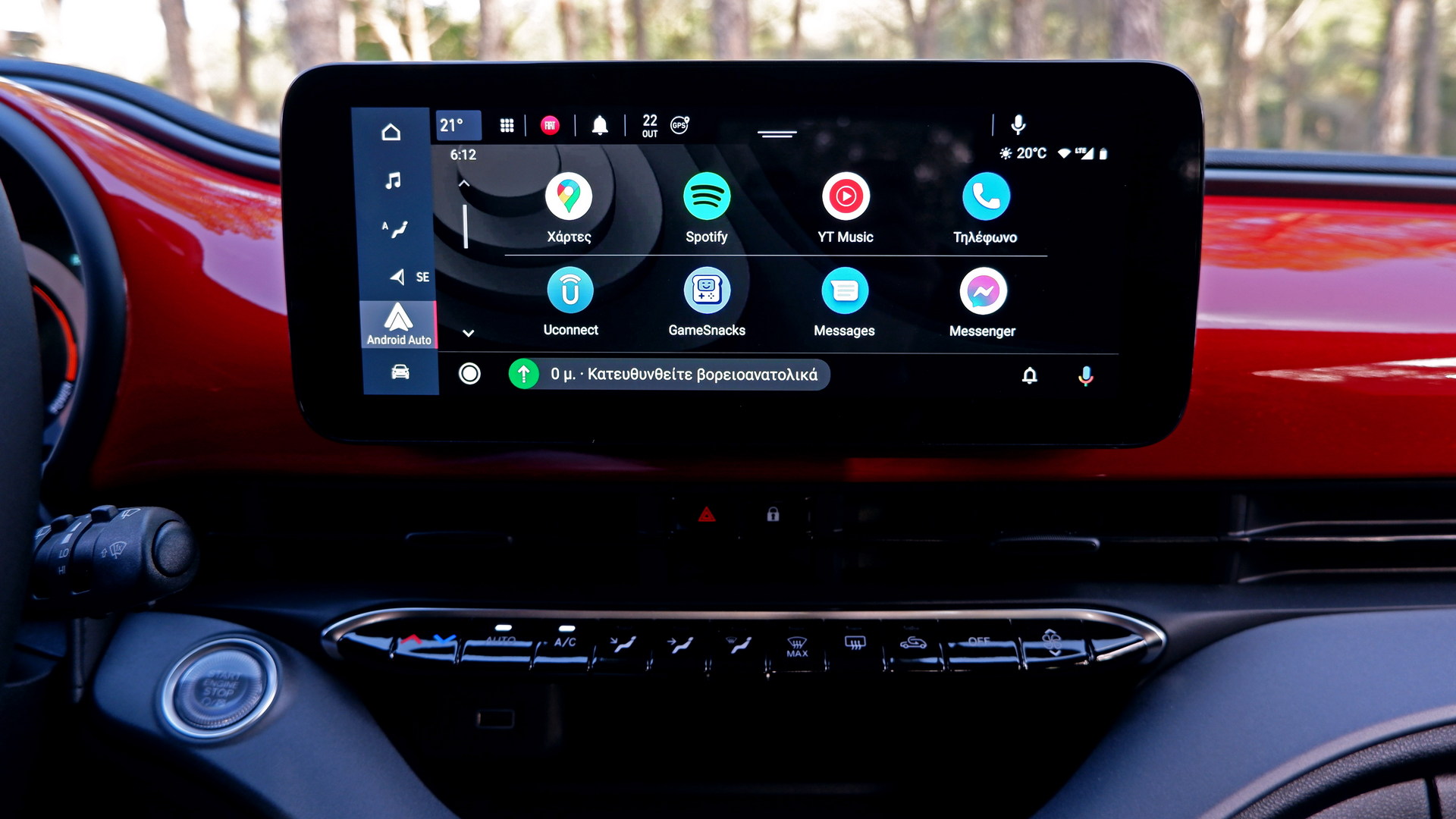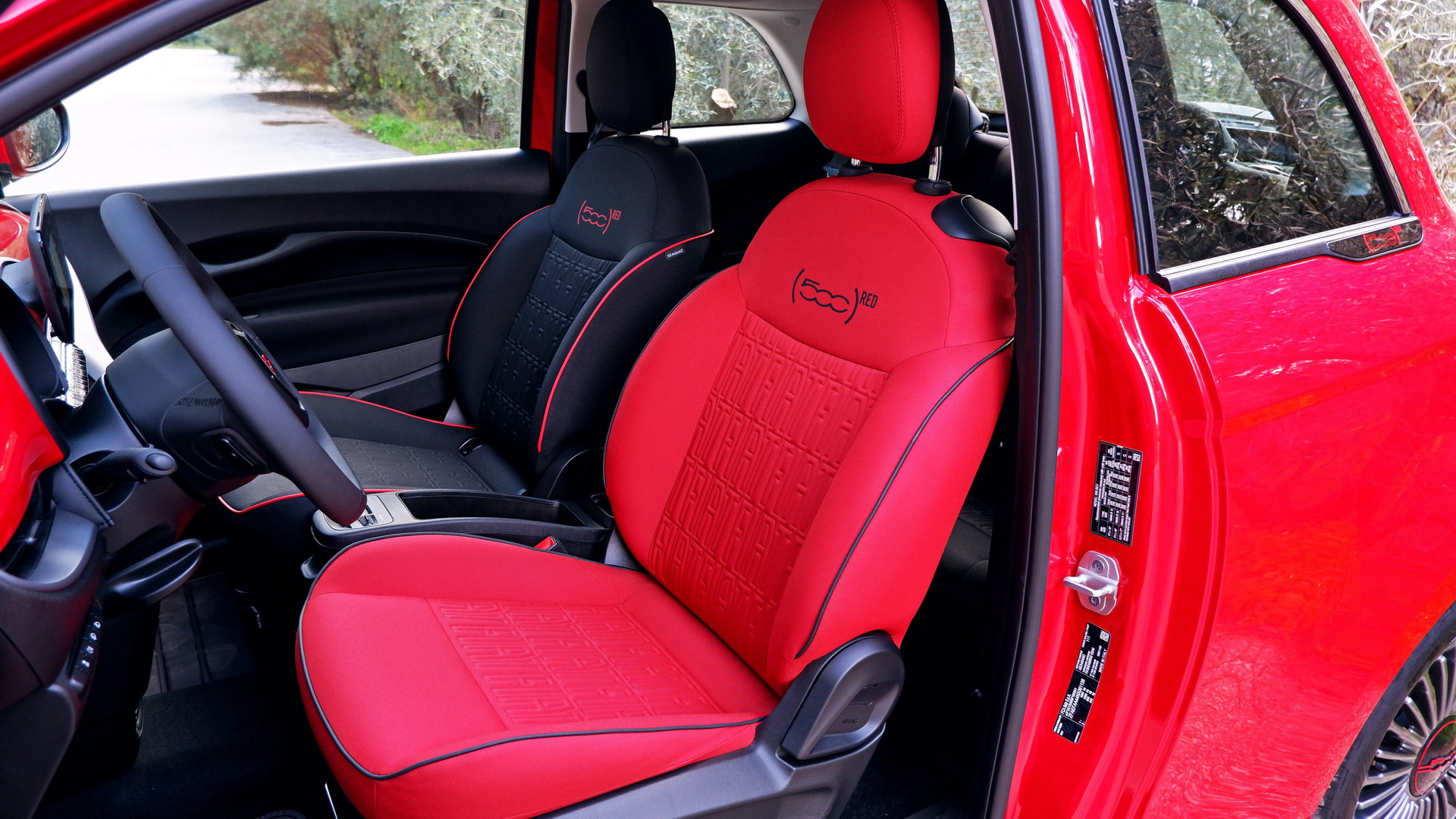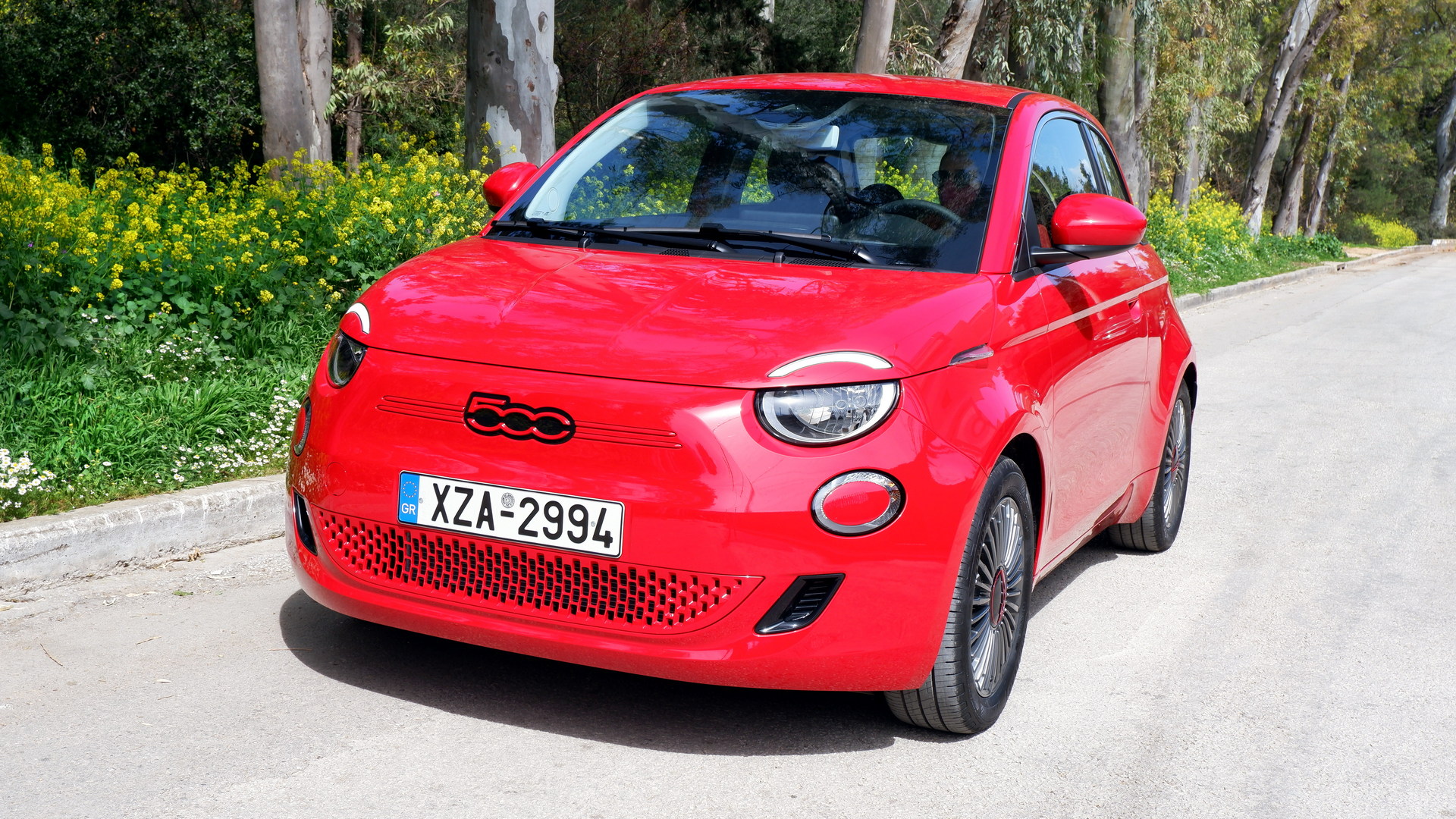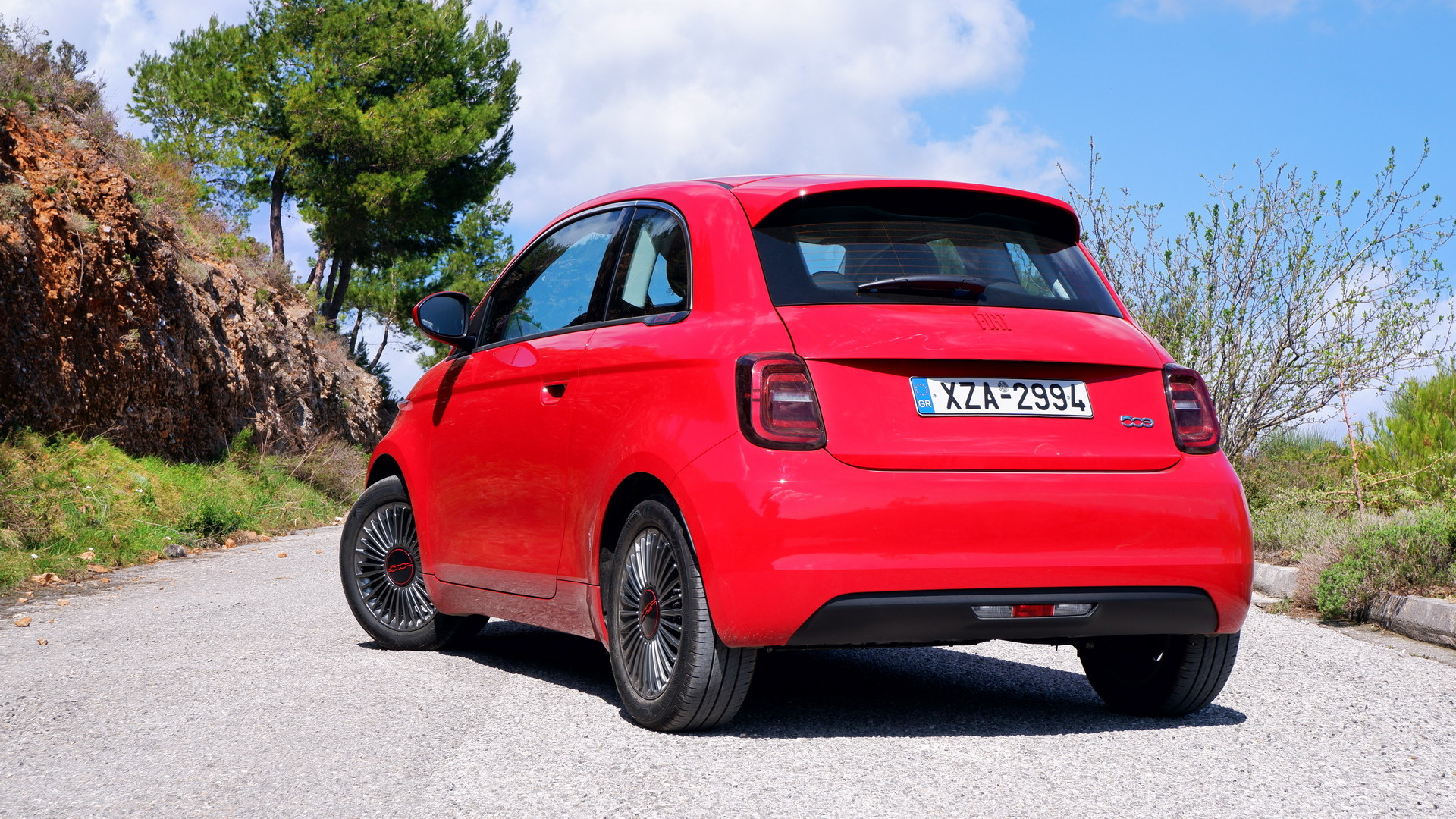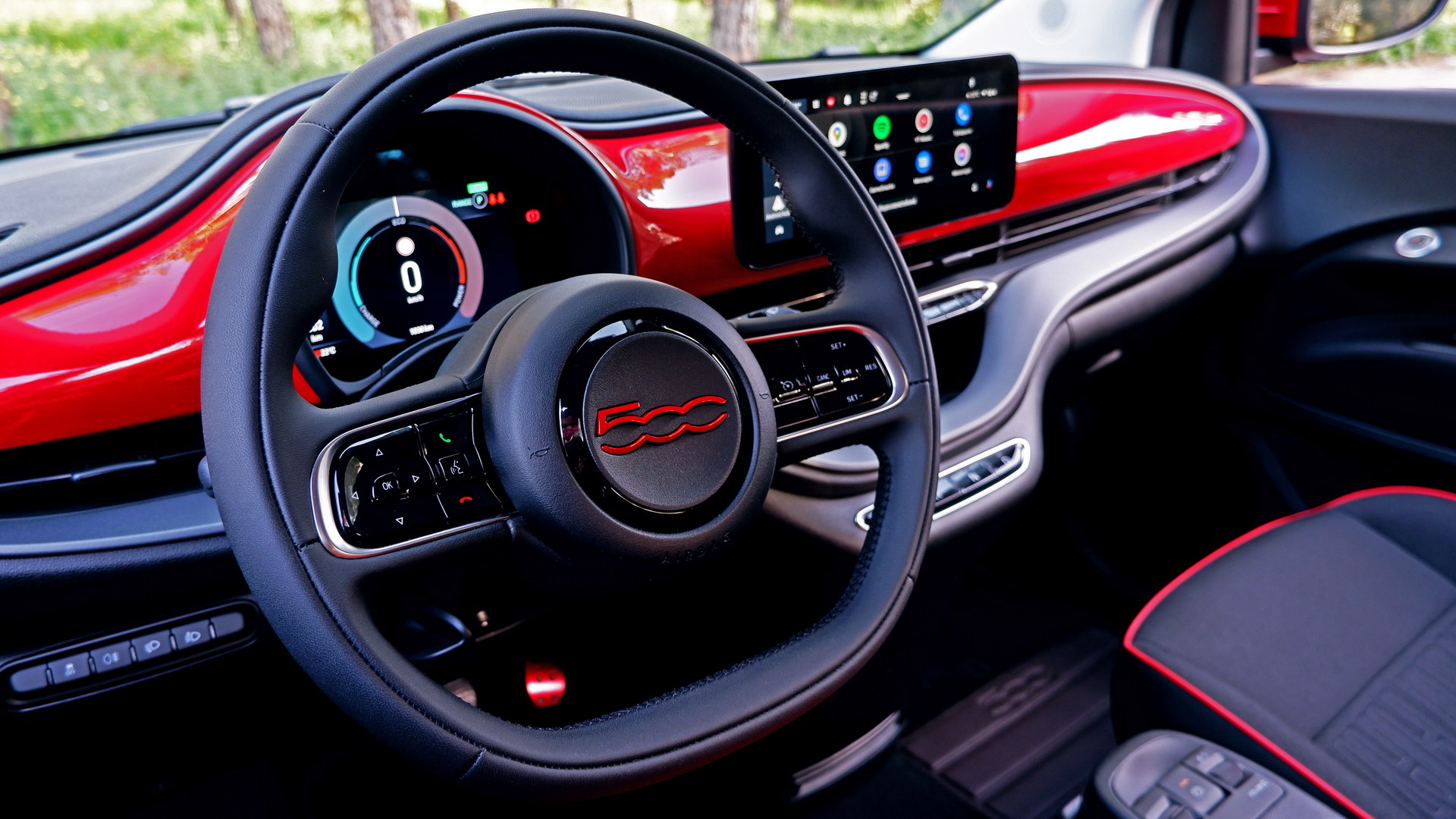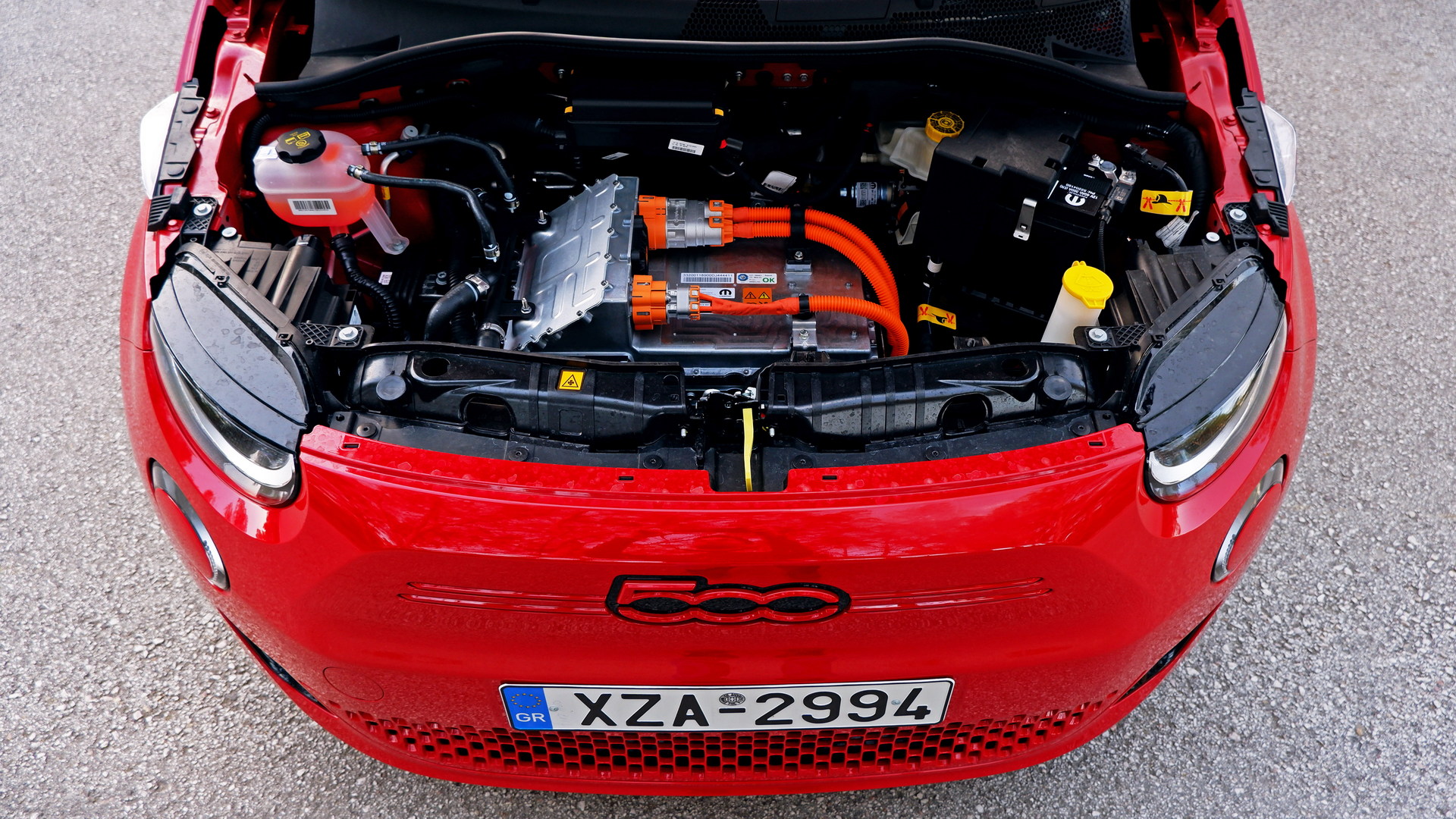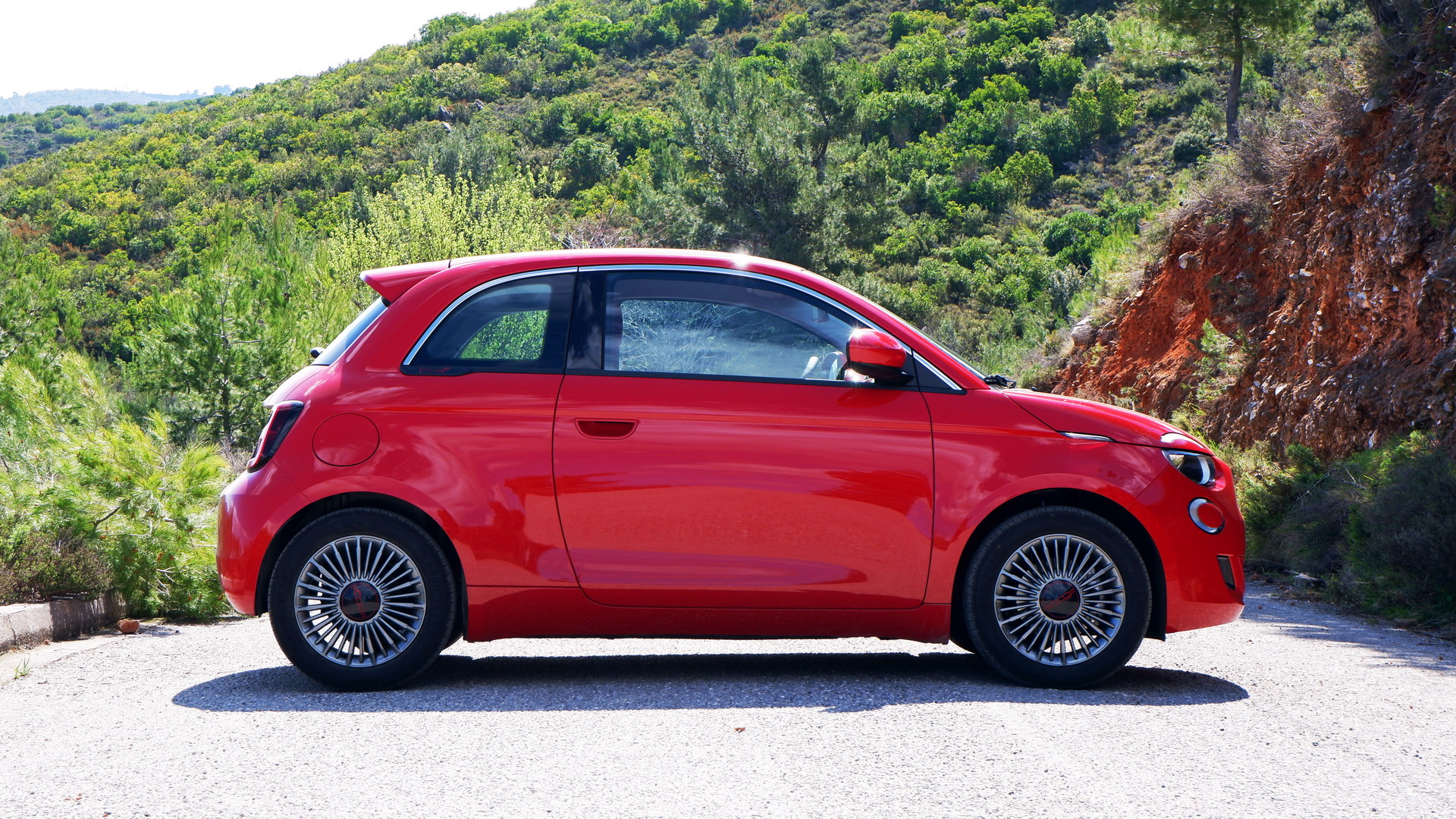The Fiat 500 is one of the most iconic city cars in the world which makes it a fitting choice for the Italian brand’s first EV. The new generation, introduced in 2020, is exclusively available in electric form and even though it was developed in the FCA days, it is still an important model for Stellantis. We recently got our hands on a Fiat 500 (RED), a special trim with distinctive style and pandemic-fighting features which has lately expanded to the entire Fiat range. Our goal was to see how well the 500 stacks up in the urban EV race and if it is better than the old 500 as a daily driver.
Cute, Premium, And Iconic
The looks might be familiar to the untrained eye, but the new 500 is radically different from its ICE-powered sibling that remains on sale in mild-hybrid form as a cheaper alternative. An easy way of distinguishing the EV from the previous generation is the shape of the double headlights with bonnet-mounted DRLs fully separated from the main units.
See Also: Fiat Partners With Tenor Andrea Bocelli And JBL For Special Edition 500 La Prima
The proportions are quite similar but the 500 has grown in all dimensions, measuring 3,632 mm long which is still pretty compact. It is also the only hatchback that doesn’t come in five-door flavor, although there is an unconventional 3+1 bodystyle featuring an extra suicide door on one side. The 500 we drove is the more traditional three-door hatchback, but I also have a little experience with the 500 cabrio.
From the first glance, the RED trim doesn’t look as premium as the flagship La Prima due to the lack of full-LED headlights and the slightly smaller 16-inch wheels, but it is still charming. The Passione Red exterior shade is not the only color option for the RED since you can also get it in Mineral Gray, Ice White, and Onyx Black, though always combined with red grille, badges, and mirror caps. Setting aside the spec, design aficionados will appreciate the wonderful surfacing and the well-thought-out styling features of the new 500 which has improved on the recipe of its predecessor from 2007.
Better Quality, More Tech, Cramped Rear Seats
Inside the 500 RED, the first thing you notice is the optionally red driver’s seat, contrasting with the rest of the sustainable Sequal Marine Plastic upholstery that is black, and matching with the piping and the signature body-colored dashboard. Despite the hard-touch plastics, the cabin of the 500 looks and feels quite premium for the segment, with improved quality compared to older Fiat products.
In terms of technology, the RED trim comes standard with the largest-available 10.25-inch infotainment touchscreen. The graphics are crisp, the screen is responsive and the interface is easy to use thanks to the menu shortcuts on the left side. The wireless Android Auto (it also supports wireless Apple CarPlay) worked great, allowing me to use Google Maps and Spotify while on the go. Thankfully, the climate controls are semi-embedded in the touchscreen which means that you can turn the heater/air-condition on/off quickly by using the stylish physical buttons below. Speaking of which, in order to open the doors you have to press an illuminated button located on the door cards which feels weird at first, although there is an extra physical-release latch below for emergencies.
The standard 7-inch digital instrument cluster is also nice with the ability to show navigation and easy configuration from the buttons on the beautiful two-spoke steering wheel. What I found unacceptable for a 2022 model is the lack of a rear-view camera and parking sensors although the compact footprint of the 500 made it very easy to park. Also, the standard equipment of the RED doesn’t include the sophisticated Level 2 ADAS found in higher trims.
The high driving position can feel a bit odd if you are taller than 6 feet (1.84 m), with the drawback of not being height-adjustable (except in the La Prima). Still, this won’t be a problem for most people thanks to the adjustable steering wheel column. The center console is more compact than in the ICE-powered 500 but taller drivers might touch it with their right knee which can be irritating at times. Visibility is great upfront, but not ideal towards the back due to large C-pillars.
Rear passenger room has always been a weak spot for the 500 and the EV platform didn’t change that. It is really cramped at the back with little headroom and absolutely no knee room to spare. It is hard for the average-sized individual to find a comfortable position and the small rear windows make it feel a bit claustrophobic. Things are much improved in the cabrio when the fabric roof is retracted but still, I wouldn’t recommend the rear seats for anything more than short trips if you are not a child.
In-cabin storage is good enough with a large tray in the center of the dashboard highlighted with Torino’s skyline, regular-sized door pockets, a narrow but handy compartment between the front seats, and a retractable cupholder that is a little hard to reach.
The 185 lt (6.4 cubic feet) of the cargo space are more than the 171 lt (6 cubic feet) of the Honda e, but smaller than the 250 lt (8.8 lt) of the VW e-Up!, with the tapered shape of the rear end sacrificing some of the 500’s practicality. Rear seats can fold down for transporting large items but don’t expect to find a frunk since Fiat has snuggled the electric motor under the bonnet.
COVID doesn’t Like RED
The pandemic-fighting character of the RED trim is not only associated with Stellantis’ support to the organization, but also in some extra features that go beyond styling. A special biocide substance has been applied to the air cabin filter, the steering wheel, the seats, and the boot floor which kills 99.9 percent of the bacteria and viruses. There is also a Welcome Kit that comes with the car bringing a liquid dispenser and a fancier key cover.
Additionally, the Fiat 500 RED gets an extra “Sanitizing Glove Box” system with a UV-C lamp in the glove compartment. This allows you to sterilize items on demand with the touch of a button in three-minute circles. Unfortunately, our press car was an early order and doesn’t have this feature, limiting our healthcare-related bragging rights.
Easy to drive, Quick With A Refined Ride
Fiat wanted the transition to the electric era to feel natural for newcomers, thus they kept the familiar FWD layout with the electric motor under the bonnet, the battery well hidden under the floor, and the charging port where you would normally find the gas flap. Indeed, the 500 is very easy to drive and takes no time to get used to, setting aside the lack of a height-adjustable driver’s seat in this trim which is not ideal for taller drivers.
You press the start-stop, then the D button on the center console, and you are ready to take off in a silent manner. Power delivery is smooth and effortless without any wheel spinning even at full throttle. The first time you go over 20 km/h, people in the surrounding area will listen to the classic Nino Rota tune playing from an outside speaker. This is another way for the 500 to make you smile – as long as you don’t hate the attention – but it also proved to be useful for street-walking pedestrians who aren’t familiar with the quiet hiss of an EV approaching from outside their field of vision.
Read Also: Fiat To Unveil A New Supermini And Three New Crossovers By 2027
In typical Fiat fashion, the steering wheel is very light. This, in combination with the compact footprint and the effortless stop and go of the EV powertrain makes it a feast to drive around the city independently of your driving experience. The suspension is not soft but it absorbs bumps in an efficient manner without making passengers uncomfortable. The biggest improvement over its predecessor is the ride quality, with the electric 500 being comparable to larger premium vehicles in that regard.
Driving outside the city is where you notice that the 117 hp (87 kW / 118 PS) and 220 Nm (162 lb-ft) of torque from the electric motor are offering great performance. Acceleration feels quicker than the advertised 9 seconds for the 0-100 km/h (0-62 mph) sprint, allowing overtaking with great confidence. On the highway, the 500 gets up to speed at no time and feels very sturdy even at the 150 km/h (93 mph) top speed. It is also quiet for the segment’s standards, making it a nice cruiser.
On twisty roads, the 500 showed good handling with little body roll and the ability to keep up at a fast pace. However, the light steering is not as communicative as we’d like, and you don’t have the same level of confidence and control as with the Honda e which felt more planted and playful. We guess that the already confirmed Abarth variant will be a great pocket rocket since the capability is already there.
Good Range, Accurate Trip Computer
One important aspect of all EVs is the driving range. In mixed driving scenarios and without being easy with the throttle, the larger 42 kWh battery will easily provide 260 km (162 miles) of range as noted by the very accurate trip computer. This might be less than the advertised WLTP figure of 321 km (199 miles) but the 500 will definitely get you further than any Honda e, Renault Twingo Z.E., or VW e-Up! on any day. The 500 also proved to be consistent and doesn’t drain the battery when you push it as fast as other EVs do.
The “Range” driving mode is great for one-pedal driving with regenerative braking slightly increasing the available range compared to the “Normal” mode without restricting performance. In contrast, the “Sherpa” mode should be reserved for emergencies since it limits top speed and shuts down the climate control so you can get the extra mile. From an 11 kW charger, an empty battery will get to 100 percent in 4 hours and 15 minutes which is not bad, while a household socket will get you there in 15 hours. During our time with the 500 we plugged it into a public charger and saw 100 km (62 miles) of range added in a couple of hours.
Cheaper 500 models can be had with the 23.65 kWh battery and a slightly less powerful 94 hp (70 kW / 95 PS) electric motor but we wouldn’t recommend this setup if you are not restricted to the urban cycle.
Pricing And Competition
Naturally, the 500’s transformation to a fully electric model has made it more of a niche product due to the inevitable price increase. In Greece, pricing for the 500 RED Hatchback with the small battery starts from €27,650 and goes up to €37,350 for a fully-loaded 500 La Prima 3+1. This means that the most expensive 500 undercuts the top-spec Honda e Advance (€38,990). Note that those numbers are before you add the government incentives which slash around 20 percent of the price, taking the entry-level 500 to €19,900.
Our Fiat 500 RED Hatchback with the 42 kWh battery costs €31,850, undercutting the larger Peugeot e-208 supermini (from €32,300) and the Honda e (from €35,990). With the government incentives, the final price is reduced to €23,084 which in the ICE-powered world could get you a well-equipped supermini or even a small SUV. Still, we believe that the Fiat 500 RED represents good value for a style-focused urban EV, despite missing the ADAS suite, the full-LED headlights, the 17-inch wheels, and the rear-view camera of the La Prima flagship.
Verdict
The electric Fiat 500 makes everyday chores more pleasant with its cuteness, unique character, and ease of use for all kinds of drivers. The competitively-priced EV is a great choice for urban use, while it performs well on the highway with a surprisingly refined ride. The 260 km (162 miles) of real-world range is more than adequate for the average driver and proved to be quite consistent. The only significant drawback is the limited rear passenger room which makes it less practical than other cars in the segment, although most 500 buyers won’t care too much about it. Overall, the electric era brought improvements in all aspects compared to its ICE-powered predecessor, and the 500 feels more premium and mature than ever before without losing any of its charm.

